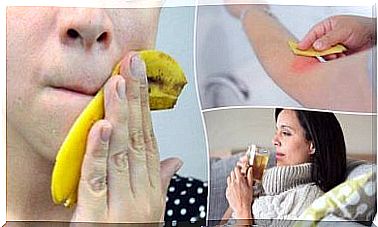Tips For Caring For A Diabetic Foot

The care of a diabetic foot is very important as this condition implies that the patient is more susceptible to certain types of injuries, both intrinsic and extrinsic. It is therefore a high-risk condition.
Diabetes is a chronic disease that affects more than 400 million people worldwide. This condition causes a significant increase in blood sugar (sugar) levels. This happens when the body does not secrete or does not secrete enough insulin.
Insulin is a hormone that the pancreas secretes. It allows glucose from food to enter cells to provide them with energy. If there is not enough insulin, glucose remains in the blood, causing serious health problems over time.
What is a diabetic foot?
A diabetic foot is a neuropathic (nerve involvement) clinical condition caused by hyperglycemia (high blood sugar levels). It can occur with or without ischemia (lack of blood supply). After a traumatic trigger, it causes injury to the foot or ulceration.
Today it is one of the leading causes of non-traumatic amputations, as patients often suffer from complications such as ulcers and nervous disorders (loss of sensation). According to the World Health Organization , diabetes will affect more than 330 million people by 2030.
“ Diabetic foot ulcers (DFU) are associated with significant deterioration in quality of life, increased morbidity and mortality and are a huge drain on health care resources ,” said Dr. Andrew Boulton, Professor at the University of Manchester and Consultant Physician at Manchester Royal Infirmary.
General tips for caring for a diabetic foot

- Never walk barefoot. Nerve damage reduces sensation, meaning you probably won’t feel it if there are stones or small objects in your foot.
- Wash your feet every day with mild soap and warm water. Do not soak your feet. To dry your feet, pat them gently with a towel instead of rubbing them vigorously. Be very careful when drying between your toes.
- Use lotion to keep the skin on your feet soft and hydrated. This prevents cracking from dry skin and lowers the risk of infection. Don’t put lotion between your toes.
- Cut your toenails without bending them and avoid cutting corners. Use a nail file. If you detect an ingrown toenail, see your doctor.
- Do not use disinfectant solutions, over-the-counter medicines, heating pads or sharp instruments on your feet. Also, do not put your feet on radiators or near the stove.
- Do not smoke. Smoking damages blood vessels and reduces the body’s ability to carry oxygen. In combination with diabetes, smoking can significantly increase the risk of amputation (not only of the feet, but also of other parts of the body, such as the hands).
Tips for shoes

- Choose and wear your shoes carefully, as ill-fitting shoes can lead to ulcers and subsequent infections.
- Buy new shoes late in the day when your feet are more swollen. Also make sure they are comfortable and walk around in them.
- Determine the fit of your shoe in terms of width, length, back, heel and soles. Measure your feet every time you buy new shoes.
- Avoid pointed-toed shoes and high heels. Try to buy shoes with a leather upper and a wide toe box.
- Wear new shoes for up to two hours each time. Don’t wear the same pair of shoes every day.
- Inspect the inside of each shoe before putting it on. Don’t tie your shoes too tight or too loose.
- Avoid long walks without breaks, take off your shoes and socks, and check for signs of pressure (redness) or sores.
Final Thoughts
As you have seen, it is important that all patients with high blood sugar take steps to care for a diabetic foot. In addition to medical checkups, this also helps to prevent complications.
If you need more information about caring for a diabetic foot, the Diabetes Association Netherlands has published a very complete guide for you to read.








